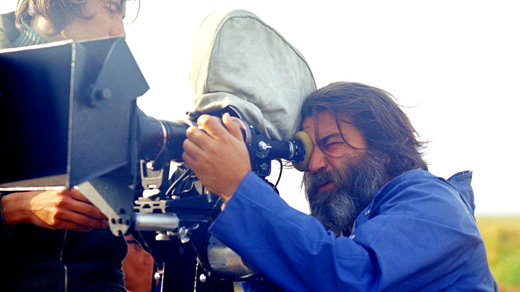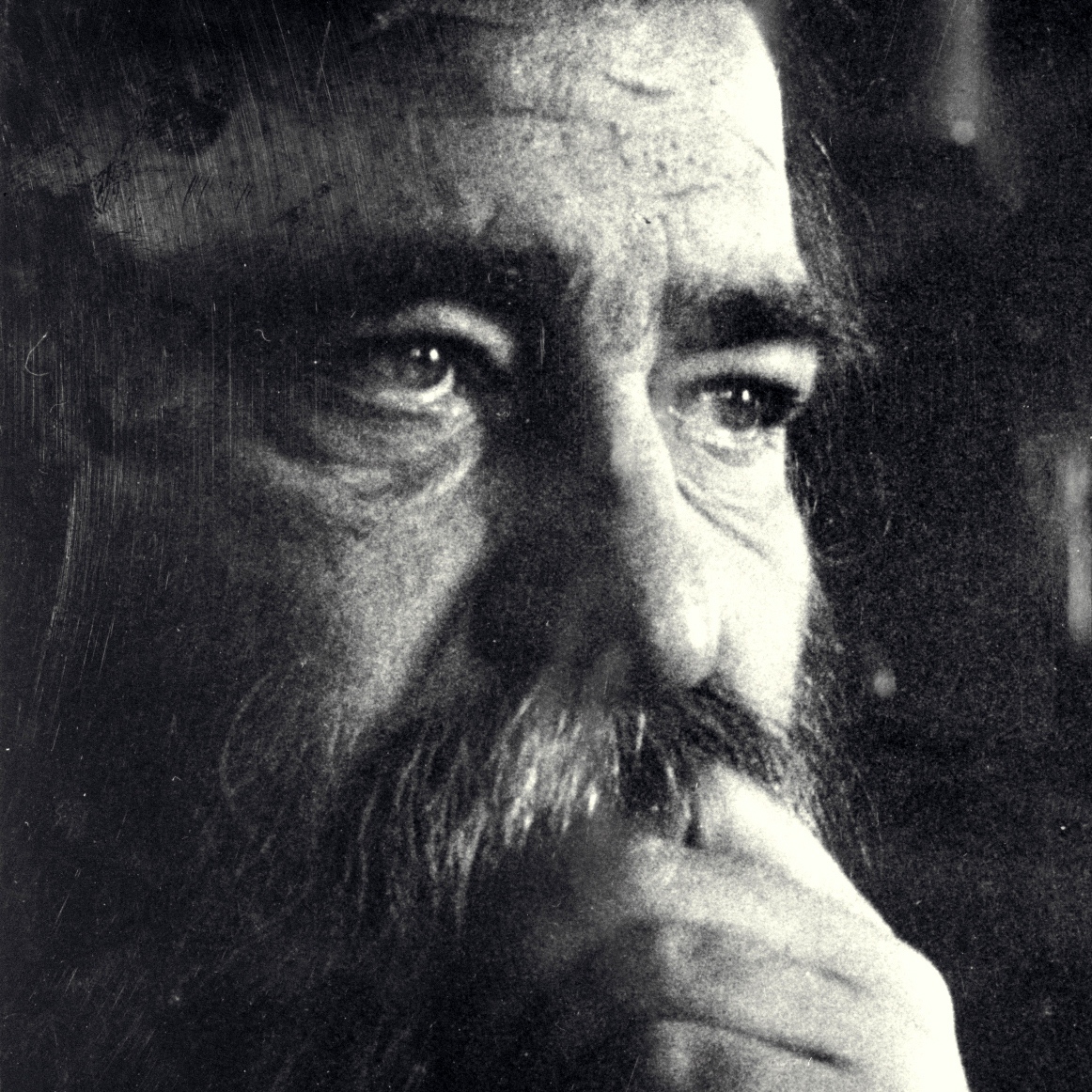
Special relics were presented at the opening ceremony of our Sándor Sára exhibition
On October 1, 2019, an exhibition commemorating the work of the recently deceased legendary Hungarian film director was opened in our Library. Presented at the exhibition are relics related to Sándor Sára’s activity as a cameraman, film director and photographer, never before seen by the general public.
“On this occasion, the Hungarian national library presents itself not only as the most complete Hungarian collection, but also as a keeper of Sándor Sára’s bequest, since relics of his rich oeuvre are stored and handled by several of our special collections” – said Judit Hammerstein, Acting Director-General of National Széchényi Library.
 The Photo and Filmstrip Collection of NSZL keeps a lot of photographs donated to the Library by Sándor Sára and photos related to his person. The exhibition presents a selection of the unit still photographs of major films directed and photographed by Sándor Sára during his career. These films are not only important stages of a lifetime, but also milestones in Hungarian film history. Exhibited are portraits made of Sándor Sára and unit still photographs of his major works as a cameraman – Sindbad (Szindbád) (directed by Zoltán Huszárik), Father (Apa) (directed by István Szabó), Ten Thousand Days (Tízezer nap) (directed by Ferenc Kósa), Pansy (Árvácska) (directed by László Ranódi) –, as well as albums and NSZL-kept posters of well-known films directed by Sára, such as The Upthrown Stone (Feldobott kő) or Eighty Hussars (Nyolvan huszár).
The Photo and Filmstrip Collection of NSZL keeps a lot of photographs donated to the Library by Sándor Sára and photos related to his person. The exhibition presents a selection of the unit still photographs of major films directed and photographed by Sándor Sára during his career. These films are not only important stages of a lifetime, but also milestones in Hungarian film history. Exhibited are portraits made of Sándor Sára and unit still photographs of his major works as a cameraman – Sindbad (Szindbád) (directed by Zoltán Huszárik), Father (Apa) (directed by István Szabó), Ten Thousand Days (Tízezer nap) (directed by Ferenc Kósa), Pansy (Árvácska) (directed by László Ranódi) –, as well as albums and NSZL-kept posters of well-known films directed by Sára, such as The Upthrown Stone (Feldobott kő) or Eighty Hussars (Nyolvan huszár).
 “Sándor Sára’s oeuvre is about supportive social attitude towards the minorities – in his film images, however, there is a sense of grandeur, monumentality and heightened rhetoric. It is perhaps in this tension that the essence of his art can best be grasped. Gypsies, people living alone or out on the farms, political victims of World War II and the 1950s, eighty hussars risking their lives while heading for home, spurred by the news of a revolution in Pest – all of them being in a minority destiny and life situation. And then we have not even mentioned the recollecting people in his documentaries, who had been run all over by history, and whose tragedies were confessed for the first time in front of Sára’s camera”– appraised the iconic Hungarian artist Gábor Gelencsér, film aesthete, Associate Professor of the Film Studies Department of the Faculty of Humanities at Eötvös Loránd University.
“Sándor Sára’s oeuvre is about supportive social attitude towards the minorities – in his film images, however, there is a sense of grandeur, monumentality and heightened rhetoric. It is perhaps in this tension that the essence of his art can best be grasped. Gypsies, people living alone or out on the farms, political victims of World War II and the 1950s, eighty hussars risking their lives while heading for home, spurred by the news of a revolution in Pest – all of them being in a minority destiny and life situation. And then we have not even mentioned the recollecting people in his documentaries, who had been run all over by history, and whose tragedies were confessed for the first time in front of Sára’s camera”– appraised the iconic Hungarian artist Gábor Gelencsér, film aesthete, Associate Professor of the Film Studies Department of the Faculty of Humanities at Eötvös Loránd University.
 Sándor Sára also entrusted NSZL with his notebooks and the letters of the candidates for his roles, which are valuable documents of age and cinema history. The Collection of Historical Interviews is keeping the uncut shooting materials of several of his emblematic documentaries. This irreplaceable collection of interviews can be a major source for researchers of 20th century history. Only a fraction of the interviews had been used in the finished documentaries, screened officially elsewhere, so the materials kept by the Collection of Historical Interviews represent a stock, never before published or researched. Two years ago, with the artist’s consent, National Széchényi Library started digitizing the more than 1,000 audiovisual documents kept here, the personal confessions recorded on film at the late 1980s and early 1990s. Currently, the entire shooting material of the three-part documentary entitled Hungarian Women in the Gulag (Magyar nők a Gulágon) is available in digital format.
Sándor Sára also entrusted NSZL with his notebooks and the letters of the candidates for his roles, which are valuable documents of age and cinema history. The Collection of Historical Interviews is keeping the uncut shooting materials of several of his emblematic documentaries. This irreplaceable collection of interviews can be a major source for researchers of 20th century history. Only a fraction of the interviews had been used in the finished documentaries, screened officially elsewhere, so the materials kept by the Collection of Historical Interviews represent a stock, never before published or researched. Two years ago, with the artist’s consent, National Széchényi Library started digitizing the more than 1,000 audiovisual documents kept here, the personal confessions recorded on film at the late 1980s and early 1990s. Currently, the entire shooting material of the three-part documentary entitled Hungarian Women in the Gulag (Magyar nők a Gulágon) is available in digital format.
 “This occasion, along with its tragedy, will help raise awareness of the preservation of the cultural memories of the Hungarian national past and cherishing the memory of our own icons. According to both its original mission and new vision, National Széchényi Library is the center for preserving disappearing memory as history and making it available for the public” – pointed out Acting Director-General Judit Hammerstein at the opening ceremony of the exhibition.
“This occasion, along with its tragedy, will help raise awareness of the preservation of the cultural memories of the Hungarian national past and cherishing the memory of our own icons. According to both its original mission and new vision, National Széchényi Library is the center for preserving disappearing memory as history and making it available for the public” – pointed out Acting Director-General Judit Hammerstein at the opening ceremony of the exhibition.






